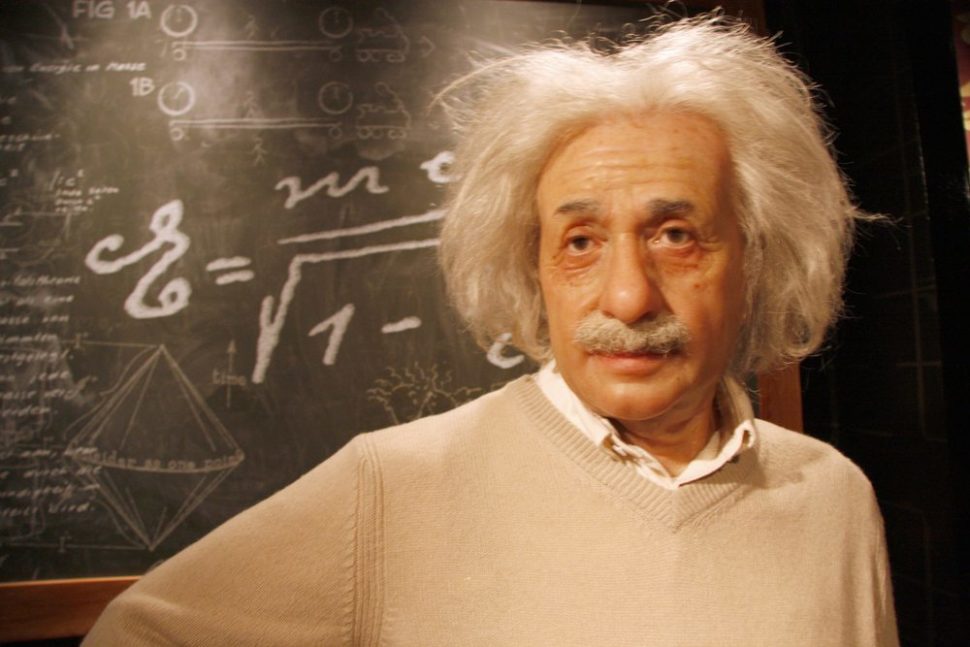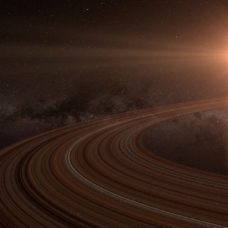Naturally, since Einstein passed away, physicists have conducted experiments with an aim to show where he was right and where he was wrong. Here are three good examples.
Albert Einstein is a genius whose once-outlandish physical theories changed the world.
Until today, scientists of all stripes debate his concepts and double-check his math equations in their endless quest for truth.
Although their goal isn’t always solely to corroborate or contradict Einstein’s views on reality and the meaning of life, the sheer breadth of his theoretical musings often means scientists conflict with Einstein at every turn.
Of course, physicists have proven Einstein right on numerous occasions. Whether in relation to the theory of general relativity or the existence of gravitational waves, it’s incredible that one man has dispelled such universal mysteries.
However, as a human, Einstein was far from being infallible.
Einstein’s 3 Biggest Mistakes:
1. The Universe has Never Been Constant
We begin with this because Einstein himself saw it as his biggest mistake.
The principles of general relativity work fine within with the confines of a static reality and a constant universal framework.
When he first developed general relativity, Einstein had to invent a constant (like pi, for example) as a foundation. He called it the “cosmological constant”, aka Lambda, and used it as a base to formulate multiple overarching ideas.
Without Einstein’s Lambda, space-time and gravity as he described them would no longer hold mathematically.
Not long after his theory was released to critical scrutiny, it was proven that not only is the universe is expanding, but it is doing so at an accelerating pace.
But, who knows. Recently, scientists found evidence of a discrepancy in the expansion rate. Maybe the constant does exist but it’s just shrouded or distorted somehow.
2. Quantum Entanglement
This isn’t Einstein’s biggest mistake. Why? Well, because competing scientists showed Einstein evidence of Lambda’s inaccuracy during his lifetime. He accepted it and called the cosmological constant his biggest mistake.
Yet, Einstein did say that nothing travels faster than light–ever–not even information.
One of the most researched and talked about concepts in quantum mechanics is “entanglement”. According to this theory, two entangled photons are technically in two places at once. Theoretically, this allows for faster-than-light communication.
Within the lexicon of quantum mechanics, entangled particles are described by their same mathematical relation known as a wavefunction. Entanglement naturally occurs when two particles are created at the same time in the same place.
These particles can become separated in physical space. Yet, that mathematical relationship means that no matter how far apart they are, a measurement of one impacts the other no matter the distance.
Due to special relativity Einstein thought that this was impossible. For Einstein, this was clear evidence that quantum theory was flawed and/or incomplete. This is where Einstein called quantum mechanics “spooky action at a distance.”
Since Einstein’s time, other brilliant minds have heaped on the proof of quantum mechanics natural existence. But, it’s not all bad for Albert, as these scientists also suggest it should be implemented within other classical theories in physics.
3. The Walls of Einstein’s “Local Realism” are Breakable
Here’s Einstein’s oft-repeated quote in context:
“Physics should represent a reality in time and space, free from spooky action at a distance.”
Einstein thought that reality doesn’t need an observer–which is summed up in his Local Realism principle.
Observer physics suggests that, at its extreme, reality can’t even exist without an observer taking empirical measurements of it.
Einstein goes the opposite way and says that without predefined hidden values, a system can’t even be measured.
There’s no compromise here as with relativity and quantum mechanics. Local realism, for now, seems as though it has been debunked by the Bell Test.
It took 97 million bits of 1s and 0s, randomly generated by 100,000 players from the world, managed by 12 teams of physicists from 10 countries to show that there are at least cracks in Local Realism foundations.



















His biggest mistake was the misunderstanding his own special relativity; see https://www.researchgate.net/publication/325168502_Special_Theory_of_Relativity_as_an_Account_for_an_'Optical'_Illusion_-_version_2
Thanks sir for your feedback! I’ll devour your study and consider it for one of our upcoming posts.
Yeah, this is another example of someone claiming to disprove proven science by having completely misunderstood the science in the first place.
This is exactly like the flat Earthers who have no grasp of the basics then present some absurd proof the the Earth must be flat. For example, one “proof” involved taking a bubble level on an airplane. As this Flat Head explained it, if the Earth were round, then the bubble would have to move from one end to the other as the airplane tipped going around the Earth. His theory, though relied entirely on a complete lack of understanding of how gravity works.
In the case of this Laszlo G Meszaros, who’s paper you have linked to, he clearly lacks any comprehension of what Special Relativity shows and what length contraction is. His gross misunderstanding is obvious in the introduction of his musings and the first paragraph of his “thought experiment.”
Please, read it again, then you might grasp it. Although you might first want to start thinking about reality. I know it is a hard topic. (On the other hand, so far nothing is proven regarding special relativity.)
In his paper on what we refer to as special relativity, Einstein makes it clear that special relativity says nothing about speeds greater than the speed of light. He make this point clear. Special Relativity says nothing can be accelerated past the speed of light.
Einstein was uncomfortable with a number of conclusions that could be reached as a result of his theories. Among these is the black holes. The equations from General relativity have poles, places in the functions where the equations go to infinity or zero.
It is very common for the mathematical formulas in theories to have points where they go to infinity. For instance, resonant behaviors, both physical and electrical, will predict infinities. These aren’t, though, real. Rather, in reality, other factors come into effect such as the bridge collapses or the glass shatters. It turns out, in general relativity, that black holes do exist. Einstein’s only mistake was in thinking he was mistaken.
The same is true about “spooky action a distance.”. Special Relativity provides a mechanism by which this may occur. Again, Einstein was uncomfortable with what his own theories proved. In SR, as speed increases, time itself slows and distance contracts. At the speed of light, distances contract to zero and time stops. As far as light is concerned, the distance across the Universe is zero. Entanglement is allowed because the photons find no distance between each other.
It isn’t difficult to understand why Einstein was uncomfortable with this. But again, his only mistake was the belief that he was mistaken. Taken to it’s limit, Special and General Relativity lead to conclusions was not prepared to believe. As it turns out, his theories are absolutely correct and he’s been proven correct over and over and over again.